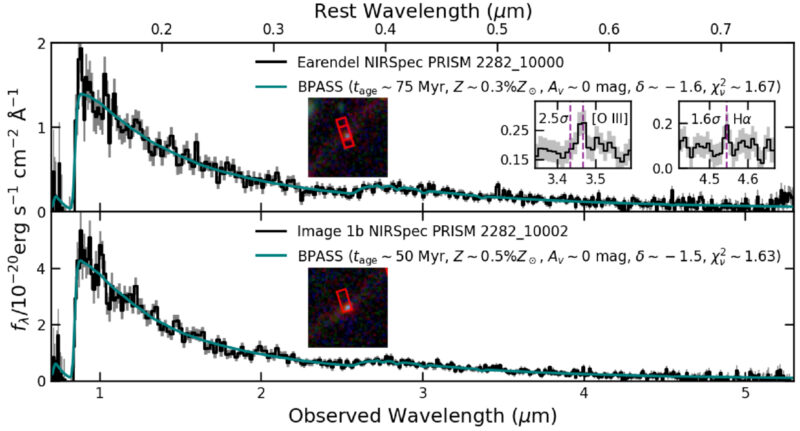Earendel: Star or star cluster?
Earendel caused a stir back in 2022, when it set the record for being the most distant star known. But this summer, a new study appeared, suggesting that Earendel might not be a star at all. Published on July 31, 2025, the study indicates that Earendel is a cluster of stars.
We first learned of Earendel when the Hubble telescope discovered the point of light in a lensed galaxy, that is, the image of a distant galaxy that’s been distorted, magnified, and sometimes multiplied by the gravity of a closer, massive galaxy or galaxy cluster.
This process of gravitational lensing lets us see objects in the distant universe. The distant galaxy containing Earendel is thought to have existed just 900 million years after the Big Bang. It exists at a time called the Cosmic Dawn by astronomers. So it’s no surprise they call the distant galaxy the Sunrise Arc galaxy. We see its light spread out in an arc shape around the massive intervening galaxy.
So is Earendel a star? Or is it a star cluster? The 2022 study (A Highly Magnified Star at Redshift 6.2) suggests it’s a star.
The 2025 study (Is Earendel a Star Cluster?: Metal-poor Globular Cluster Progenitors at z ~ 6) suggests it’s a star cluster.
Video: The story of Earendel as a star
Earendel is positioned along a ripple in spacetime that gives it extreme magnification, allowing it to emerge into view from its host galaxy, which appears as a red smear across the sky. In this video from 2022, Dr. Brian Welch talks about Earendel and explains how his team used the Hubble Space Telescope to conclude it’s a single star.
The new research suggests a star cluster instead
The new research used a stellar population model – a theoretical framework, created on a computer and used to understand the physical properties of a collection of stars – along with data from the James Webb Space Telescope. The scientists looked at both Earendel and a different light source in the Sunrise Arc galaxy. The second light source was already widely believed to be a star cluster. The astronomers found that Earendel and this other object (called “1b”) both fit the model for a cluster.
The identification of an object so far away in the universe is no slam dunk. The light from Earendel has traveled billions of light-years to reach us. Along the way, the light has been warped and magnified by the intervening galaxy cluster. But the new spectra of Earendel fit nicely with the spectra of the star cluster already known in the galaxy.
The scientists think it’s possible both Earendel and 1b are the precursors to what we know today as globular clusters. We see globular clusters orbiting the center of our home galaxy, the Milky Way. They are tightly packed, symmetrical collections of stars that orbit galaxies.
But the astronomers don’t know for sure. And the question of whether Earendel is a star or a star cluster remains open. But, they said, there would be one smoking gun, one piece of evidence that would convince them Earendel is indeed a star. If it is, then scientists would expect the star to be emitting stellar winds. And if it did, that fact would be detected via the microlensing. So far, they’ve yet to see this evidence. So the question remains: is Earendel a star or a star cluster?

Bottom line: A new study using data from the James Webb Space Telescope shows that Earendel – thought to be the most distant star known – might be a cluster of stars.
Source: Is Earendel a Star Cluster?: Metal-poor Globular Cluster Progenitors at z ~ 6
